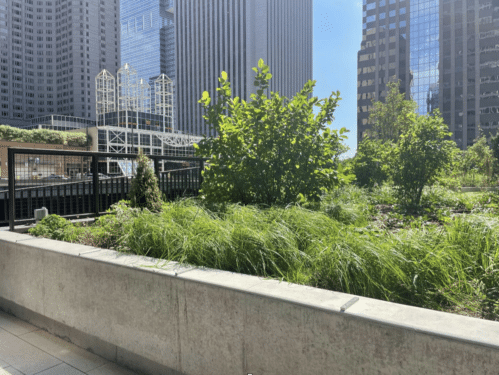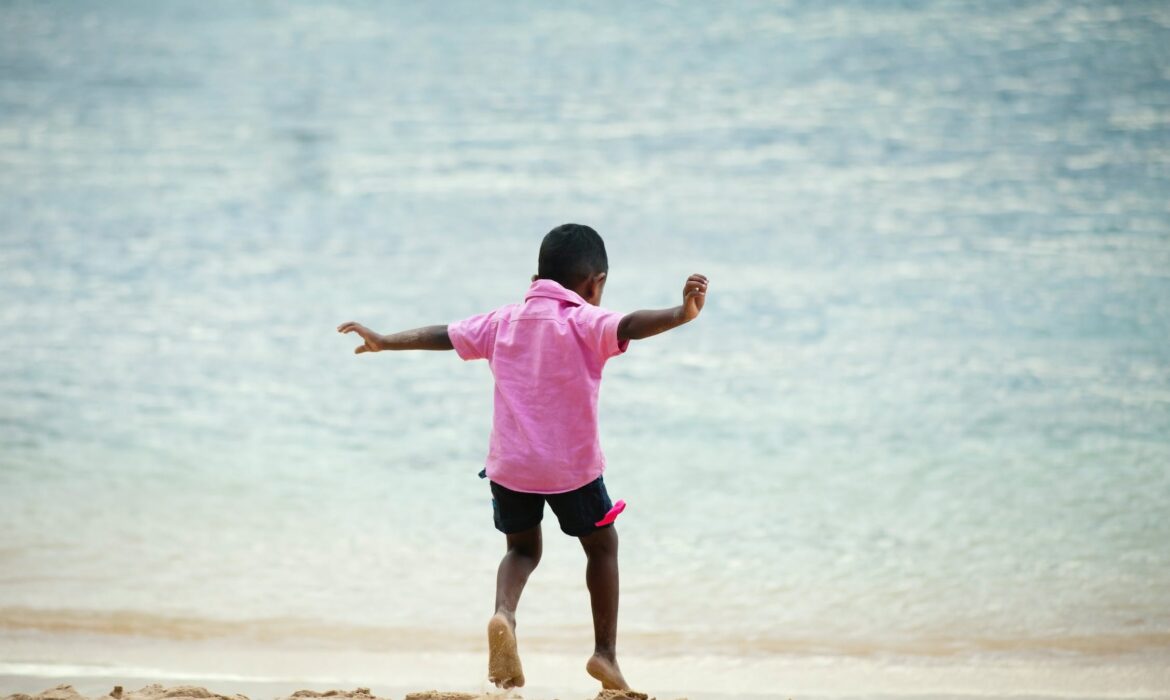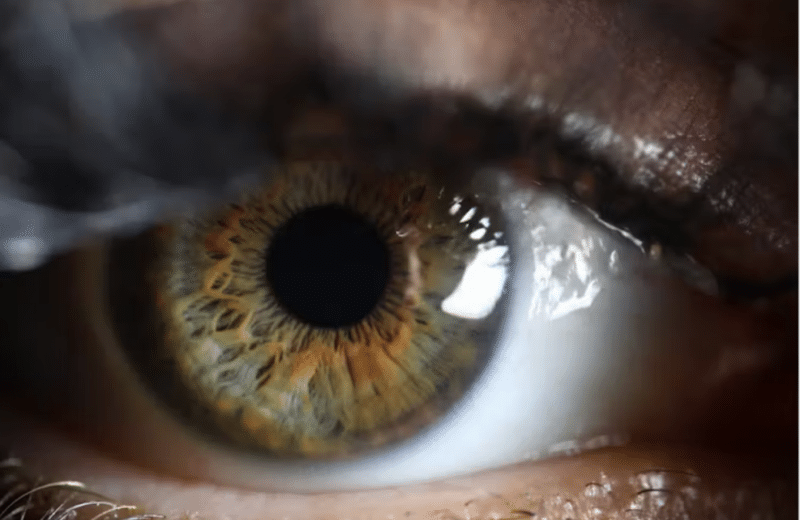Extreme heatwaves in Chicago and the U.S. are becoming hotter, longer, and deadlier.
The greatest health threat worldwide this summer isn’t Covid-19
or mpox. It’s extreme heat.
Heat indexes between 105 and 110 degrees Fahrenheit (F) — and rising — means danger: cities declaring states of emergency; pools and cooling centers filling to capacity; families facing hazardous home environments; people suffering from dehydration and heat stroke, the causes of many heat-related deaths.
“For the last 30 years, extreme heat is the no. 1 weather-related killer,” says Illinois State Climatologist Trent Ford, PhD. “We know there’s a strong connection between climate change and heat.” Extreme heatwaves are growing hotter, longer, and more frequent, Ford adds.
In the 1960s, the United States averaged two heat waves per year, according to the Environmental Protection Agency. Since 2010, that average is up to six heat waves per year.
This jump in annual average number of heat waves stems from increasing global temperatures. Since the Industrial Revolution in 1880, the world has increased by 1.9 degrees F above average surface temperature, according to NASA’s Earth Observatory. Since 1981, temperatures have been climbing almost half a degree F per decade — twice as fast as from 1900 to 1980. In fact, 2021 ranked as the sixth hottest year on record, according to the NOAA’s 2021 Global Climate Report.
People have been feeling the heat in the form of heat exhaustion, which includes sweating and dizziness, as well as severe heat illness, such as heat stroke. Severe heat illness may include vomiting and fainting, says Elena Grossman, a research specialist in Environmental and Occupational Health Sciences at the University of Illinois Chicago.
“Most people aren’t dying from heat exhaustion, they’re dying from heat stroke,” Grossman says. “With heat stroke, you can have organ failure, and organ failure can lead to death.”
On average, more than 9,000 people are hospitalized in the United States due to heat each year, and 702 people die. Chicago surpassed even the national average in July 1995, during a heat wave that killed 739 people within five days. The majority of the people who died during that heat wave were elderly and low income. They either didn’t have air conditioning, had it but couldn’t afford to turn it on, or were afraid to open windows due to potential crime.
Kathryn McConnell, PhD, an environmental sociologist and postdoctoral research associate at the Population Studies and Training Center at Brown University, calls extreme heat “a hazard we need to understand better.”
How heat happens differently in cities
Understanding extreme heat means understanding how it impacts urban areas, where the majority of Americans live. In urban areas, extreme heat events can be even more dangerous, because they create an urban heat island effect. This phenomenon occurs for several reasons:
- Urban areas have more concrete and reflective surfaces, which reflect more light while still holding heat.
- Cities have more roads, and their dark color absorbs more heat. When heat-absorbing roads take in that extra reflected light, the area becomes hotter.
- Urban areas have less vegetation, which depletes available moisture. Usually, moisture evaporates, making it feel cooler, but when there is less moisture, this cannot happen as effectively.
- Tall buildings in urban areas can prevent wind flow.
- Cars and other greenhouse gas-emitting machines add to heat in cities.
“July 2021 was the hottest month ever recorded. And summers are getting hotter and deadlier,” said Richard Spinrad, under secretary of commerce for oceans and atmosphere and the administrator of the National Oceanic and Atmospheric Administration (NOAA), in a July 2022 heat.gov webinar. According to NOAA, July 2022 was the sixth-hottest July on record. These hotter summers are dangerous to everyone, especially children, older adults, outdoor workers, and people in low-income communities.
Both Grossman and Spinrad say that with awareness, planning, and healthcare, heat-related illness is preventable.
Preventing heat illnesses
One example of proper city planning: cooling centers — but there need to be enough, and people need to know where they are. Chicago has six dedicated cooling centers. Five of these centers open from 9 a.m. to 5 p.m. on weekdays during the summer months, and one is open 24 hours a day, seven days a week. Park District field houses, libraries, police stations, community colleges, and some senior centers also serve as indoor cooling areas in Chicago, for a total of 246 options.
The Chicago Park District’s McFetridge Sports Center, for instance, is an ice rink and sports complex in the North Center neighborhood. While most people visiting the center are coming for recreation, others come to cool off in air conditioning during the hottest days of the year. The center also has water fountains and restrooms.
In addition to simply offering cooling areas, Ford says that cities must make them very accessible, especially in large, diverse cities like Chicago.
“It can be significantly different outcomes depending on what neighborhood in the city you’re in,” Ford says.

Planting vegetation serves as another way to combat extreme heat. Trees provide shade, and they help cool the air through evaporating moisture. They also absorb carbon dioxide, one of the gases causing climate change and extreme heat. Green roofs offer a way for urban areas to create more green space.
According to the City of Chicago website, Chicago has 509 green roofs that cover 5,564,412 square feet.
Not all green roofs are created equal, though. In a 2022 paper in Sustainable Cities and Society, McConnell and fellow researchers wrote, “As an adaptive response to rising temperatures, many cities have begun to install vegetated ‘green’ roofs, which now vary widely in structure and size, and have generally been shown to have cooling capacity. Yet, little research has been done to differentiate which types of green roofs are most effective at reducing urban heat.”
McConnell’s project aims to show policymakers and urban planners how they can use readily available satellite images and open-source software to identify which green roof types work best in their area. To test their methods, the researchers looked at three green roofs: a mix of intensive green roofs — those with a greater variety of plant species including trees or shrubs — and extensive green roofs, which are typically made of only one species of drought-resistant, low-lying flower. While their research methods found differences between the two, three sites don’t provide enough data to draw conclusions — except to show that planners and policymakers worldwide would benefit from testing McConnell’s methods on their own.
Every step helps in this worldwide battle. The Intergovernmental Panel on Climate Change says Earth will warm to 2.7 degrees F higher than industrial levels as early as 2030, if not earlier. Once that 2.7 degrees F benchmark is overshot, climate change will be more difficult to mitigate, including preparing for deadly heatwaves. The time to dramatically lower greenhouse gas emissions is now, the panel has been urging for years.
“Extreme heat is one of those things where the impacts are many,” Ford says. “That’s what we’re really seeing all across the world.”













